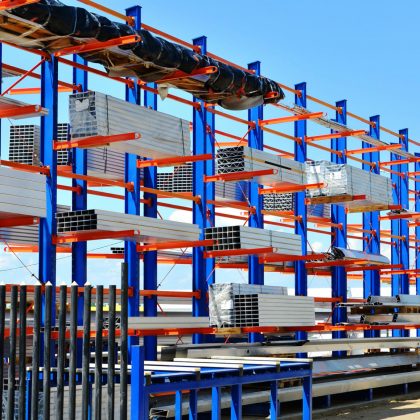RCC RETAINING WALL(CANTILEVERTYPE) MAX 6.0 MTR HEIGHT INCL COLUMN LOAD IN LINE
Retaining walls are used in the construction of basement below ground level, wing walls of bridge and to retain slopes in hilly terrain roads.
Retaining wall can be constructed with masonry as well as reinforced concrete. In case of masonry retaining wall, the thickness of wall increases with height because masonry resists the lateral pressure by its weight. Thus it is also called gravity retaining wall. While the reinforced concrete retaining wall resists the lateral pressure by structural action such as bending and results in thinner section.
1. Cantilever Retaining Wall:
Cantilever retaining walls are most commonly and widely used type of retaining wall. The following figure shows the cantilever retaining wall.
Parts of a cantilever retaining wall and its actions:
1. Vertical stem:
Vertical stem in cantilever retaining wall resists earth pressure from backfill side and bends like a cantilever. The thickness of cantilever slab is larger at the base of stem and it decreases gradually upwards due to reduction of soil pressure with decrease in depth.
2. Base slab:
The base slab form the foundation of the retaining wall. It consists of a heel slab and the toe slab. The heel slab acts as a horizontal cantilever under the combined action of the weight of the retaining earth from the top and the soil pressure acting from the soffit. The toe slab also acts as a cantilever under the action of the soil pressure acting upward. The stability of the wall is maintained by the weight of the earth fill and on the heel slab together with the self-weight of the structural elements of the retaining wall. Cantilever type retaining walls are suitable upto 5m depth of backfill.
2. Counterfort Retaining Wall:
When the height of earth to be retaining exceeds 5m, the bending moment developed in the stem, heel and toe slabs are very large which results in large thickness of structural elements and becomes uneconomical. Thus, counterfort type retaining wall is adopted for larger heights.
Counterfort retaining wall consists of a stem, toe slab and heel slab as in case of cantilever retaining wall. But it also consists of counterforts are regular interval which divides the stem. The stem with combination of counterfort behaves like a tee-beam with varying width.
The stem and heel slabs are effectively fixed to counterforts so that the stem bends horizontally between the counterforts due to lateral earth pressure. Thus the thickness of stem and the heel slab is considerably reduced due to the reduction of moment due to fixity of these slabs between counterforts.

Click here to download the file.





